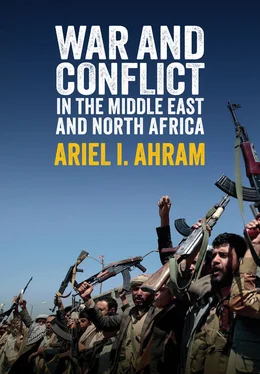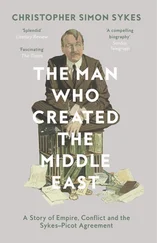Theories of human security insist on accounting for these indirect effects, even though collecting data on them is practically very daunting. During the Iraq War, the British medical journal The Lancet published a series of studies conducted by epidemiologists between 2003 and 2006. Deploying techniques commonly used to estimate death tolls from earthquakes and other natural disasters, investigators randomly sampled neighborhoods to conduct door-to-door surveys. They asked residents about anyone who had died in the previous year and the cause of death. The researchers then extrapolated to calculate how many Iraqis had died between 2003 and 2006 and compared that result to the period prior to the invasion. They concluded that Iraq’s mortality rate had shot up from 5.5 deaths per 1,000 people annually before the invasion to 13.3 per 1,000 people after. Thus, they attributed 654,965 additional Iraqi deaths to the war, including 601,027 deaths due to violence (mostly by gunfire). 27But the studies faced immediate criticism and accusation of political bias. In 2016 and 2017, Iraqi researchers used a sampling method that was similar to but more comprehensive than The Lancet studies. They calculated battle deaths at 155,000, higher but still in line with the previous IBC and Brookings studies. On the most substantive issue, they concurred with The Lancet , finding that overall mortality had nearly doubled during the war. 28The disparities in calculating the magnitude of war in part reflect differences in methodology and in the rigor of application. They also represent varying understandings of the mechanisms by which wars cause harm.
Thinking in terms of magnitude adds an important dimension to the comparative study of war in MENA. The Arab–Israeli wars, for instance, stand out as a relatively uncommon case of interstate war in the developing world. The United States and other great powers granted these wars a great deal of attention. Nobel Peace Prizes were awarded to those who sought to end the conflict. However, in terms of magnitude of violence, the Arab–Israeli wars have been comparatively modest.
In contrast, the Iran–Iraq War had by far the most battle deaths of any of MENA’s wars, at over 644,000. Indeed, according to political scientists Bethany Lacina and Nils Petter Gleditsch’s global study of battle deaths, it ranks just behind the Vietnam War, Korean wars, and the Chinese civil war as the bloodiest war since 1945. 29The Iran–Iraq War illustrates the overlap and intersection between the ways wars are organized and their magnitude. It is commonly dubbed the largest interstate war fought between Third World countries. Contemporary commentators marveled at how the Iraqi and Iranian militaries were organized in conventional military formats and adopted modern weaponry supplied from Europe and the United States. The size of their armies was truly staggering. Iran began the war with about 270,000 soldiers in seven divisions. By war’s end, it had 850,000 men, mostly conscripts, in 48 divisions. Iraq began the war with 12 divisions and 250,000 men under arms, an already remarkable 1.9 percent of its total population. By war’s end, it had 51 divisions and an astounding 800,000 troops. 30Some features of the Iran–Iraq War were reminiscent of World War I, such as the extensive use of trench warfare along the southern front and the resort to chemical weapons. Others aspects harkened to World War II, including massive bombardment of cities. Internal struggle between regimes and oppositions, particularly Kurdish opposition forces in both Iran and Iraq, was also an important dimension of this conflagration. While conventional fighting occurred along the southern and central Iraqi–Iranian frontier, northern Iraq was the stage for a protracted counterinsurgency campaign. At the end of the war, Baghdad sought to scotch the Kurdish threat definitively. Iraqi forces and locally raised militias massacred Kurdish civilians and destroyed their villages in order to root out the insurgents. The Iraqi army began using chemical weapons against Kurdish villages to finish off the work of ethnic cleansing. This campaign, which the Iraqi military code-named the Anfal, claimed at least 50,000 lives. 31
Since the late twentieth century, MENA has had the unfortunate distinction of being a region where high-magnitude violence is increasing. PRIO/UCDP researchers have calculated the number of fatalities in war since 1989. Four MENA countries – Iraq, Syria, Sudan, and Yemen – were among the top twenty countries, as shown in Table 1.1. The magnitude of these conflicts is even clearer when fatalities are standardized by total population size. Note that even these figures, though, neglect the practically difficult issue of indirect deaths, which can be orders of magnitude higher. 32
The UCDP data also provide a way to analyze the form of violence by distinguishing between three types of conflicts:
Table 1.1 Conflict-affected countries by fatalities, top twenty countries, 1989–2017
Source: Therése Pettersson and Kristine Eck, “Organized Violence, 1989–2017,” Journal of Peace Research 55, no. 4 (July 2018): 535–47.
| Country |
Total fatalities |
Magnitude (dead per 1,000 pop.) |
| Rwanda |
520,639 |
62.51 |
| Syria |
313,418 |
18.69 |
| Afghanistan |
200,552 |
9.57 |
| Ethiopia |
177,449 |
2.59 |
| Iraq |
119,001 |
4.91 |
| Congo, D.R. |
107,773 |
2.23 |
| Sudan |
92,248 |
3.30 |
| Sri Lanka |
65,373 |
3.46 |
| India |
55,073 |
0.05 |
| Nigeria |
51,272 |
0.41 |
| Somalia |
45,408 |
4.89 |
| Pakistan |
41,073 |
0.29 |
| Angola |
33,178 |
1.95 |
| Turkey |
27,751 |
0.43 |
| Colombia |
27,462 |
0.67 |
| Bosnia-Herzegovina |
26,333 |
6.98 |
| Russia (Soviet Union) |
25,480 |
0.17 |
| Liberia |
23,244 |
7.77 |
| Algeria |
21,138 |
0.67 |
| Yemen |
20,863 |
1.13 |
state-based conflict, where at least one of the parties is the government of a state, that is, violence between two states and violence between the government and a rebel group;
non-state conflict, which involves two organized groups, such as rebel groups or ethnic groups, neither of which is the government of a state; and
one-sided violence, where the government of a state or a formally organized group commits violence against unarmed civilians.
Table 1.2breaks down the violence of MENA by type. In Syria, Iraq, Sudan, and Yemen, the vast majority of the violence has involved state actors as perpetrators or targets. The violence of non-state conflicts – where states are absent – is certainly present but pales in comparison.
It is useful at this point to step back to consider the role of terrorism in MENA’s wars. Terrorism is, by definition, a non-state activity. The Global Terrorism Database (GTD), developed by the National Consortium for the Study of Terrorism and Response to Terrorism at the University of Maryland, offers perhaps the most rigorous method for defining terrorist events. 33The GTD defines acts of terrorism as acts involving “the threatened or actual use of illegal force and violence by a non-state actor to attain a political, economic, religious, or social goal through fear, coercion, or intimidation.” Terrorist acts must be intentional, entail violence or the immediate threat of violence, and the perpetrators must be non-state actors. 34Several points become clear in analyzing the GTD data. Since the 1970s, terrorism has been a global phenomenon in no way limited to MENA. Within MENA, Algeria, Egypt, Yemen, Israel/Palestine, Iraq, and Syria have especially high levels of terrorist influence. But there are many other hotspots outside the region, including in Colombia, Peru, Central America, Afghanistan, India, Pakistan, Somalia, Nigeria, and the Philippines. Moreover, when considered by fatalities, terrorist acts account for only a small scale of the overall violence in MENA. The data from 2018, for instance, list Iraq as having the second highest number of terrorist attacks, as shown in Table 1.3. But this is only a small portion of Iraq’s total battle deaths.
Читать дальше












